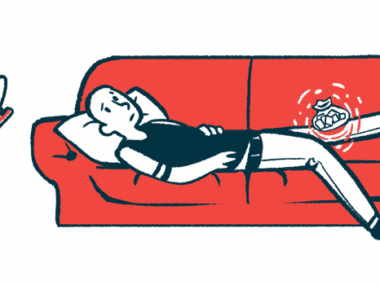Alternative Therapies Common to Manage Pain in EDS and HSD, Survey Says
Written by |

More than half of patients with Ehlers–Danlos syndrome (EDS) and hypermobility spectrum disorder (HSD) use complementary alternative therapies to manage pain, according to the results of a survey.
Opioids, physical therapy, and marijuana were rated by the participants as extremely helpful to manage chronic and severe pain.
The study “Use of complementary therapies for chronic pain management in patients with reported Ehlers-Danlos syndrome or hypermobility spectrum disorders” was published in the American Journal of Medical Genetics.
EDS is caused mostly by a genetic defect in genes that have the information necessary to produce collagen, the most important component of connective tissue. HSD is a broader definition used to identify joint hypermobility cases for which a genetic cause is unknown.
Despite pain and associated disability being serious complications of EDS and HSD, the traditional therapeutics available for pain management are limited. As a result, patients may seek complementary and alternative therapies — such as traditional Chinese medicine, herbal medications, and marijuana — that may not have been well-studied in the EDS and/or HSD patient populations.
Now, researchers at the University of Colorado School of Medicine conducted a survey among EDS and HSD patients to “ascertain what complementary and alternative therapies were used and their reported effectiveness in alleviating pain and improving quality of life,” they wrote.
In total, 486 participants, recruited through the EDS Society Facebook page and newsletter, completed the survey. Patients were on average 37.4 years old (range from 18 to 86) and mostly women (94.1%). EDS and HSD diagnosis were based on participant reports. More than 96% reported having been diagnosed by a healthcare professional.
The survey consisted of 188 questions divided into five sections: baseline pain (pain in the seven days prior to the survey); pain management strategies; overall health; demographics; and additional comments. Within the pain management strategies section, questions were focused on the use of traditional Chinese therapies, herbal medications, and marijuana.
Half (51%) of the respondents reported their worst pain in the past seven days as severe, and 61.1% said their pain would be very severe without therapies used for pain management.
Almost 60% (59.7%) of participants responded that pain affected their enjoyment of life from “quite a bit” to “very much.” Regarding pain therapies, 88.1% said that pain would interfere “quite a bit” to “very much” in their lives without these therapies.
“Participants’ average pain rating was less severe in the presence of therapy,” the researchers wrote.
Disability, measured using the SF-36 questionnaire, showed that EDS and HSD patients scored worse than the general population. The SF-36 is scored from zero to 100, in which lower scores represent a higher level of disability (100 means no disability).
Participants scored 38.5 in physical functioning and 7.3 in functioning/physical domains. The mean scores from healthy women, age 30 to 39 from the general population of Norway (serving as a comparison control), showed that the scores for the same parameters were much higher (better) — 92.5 for physical functioning and 82.8 in functioning/physical domains.
Emotional well-being scored 57.0 and the role of functioning/emotional domains scored 33.8 in the EDS/HSD group, in contrast to control scores of 79.0 and 86.9, respectively.
Pain and energy/fatigue in the survey were scored 31.7 and 18.5, while in the Norwegian control group the scores again were higher (77.2 for pain and 58.4 for energy/fatigue).
Social functioning (38.9 score) and general health (26.3 score) also were worse in the EDS/HSD participants, compared to healthy controls (scores of 87.3 for social functioning and 79.8 for general health).
The use of therapy significantly increased with pain rating. The most frequently used therapies included; non-steroidal anti-inflammatory drugs (NSAIDS, used by up to 92.5% of participants); physical therapy (88.9%); acetaminophen (74.8%); and opioids (70.1%). More than half the participants (56%) reported the use of complementary therapies.
Patients considered opioids, physical therapy, and marijuana as the most effective strategies to address pain, with 10% to 24% of those using these therapies rating them as extremely helpful.
In contrast, the least-effective therapies reported by patients were fish oil, ginger, anti-depressants, and glucosamine/chondroitin, with 33% to 59% of users rating these therapies as not at all helpful.
Opioids were rated as “mostly helpful” especially when average pain increased, while physical therapy, acetaminophen and NSAIDS were considered as less helpful with pain increase.
Use of marijuana one or more times a day was reported by 37.4% of the participants. The most common recommendation sources for marijuana use were other patients (36.4%) and healthcare providers (34.4%). About 74.4% of participants reported to start marijuana use with the goal to treat their chronic pain.
Overall, “providers caring for EDS/HSD patients should be aware of these data showing broad usage of predominantly non-prescribed therapies and be prepared to consider such usage in working collaboratively with these patients to develop comprehensive treatment plans to manage their chronic pain complications,” the researchers wrote.




